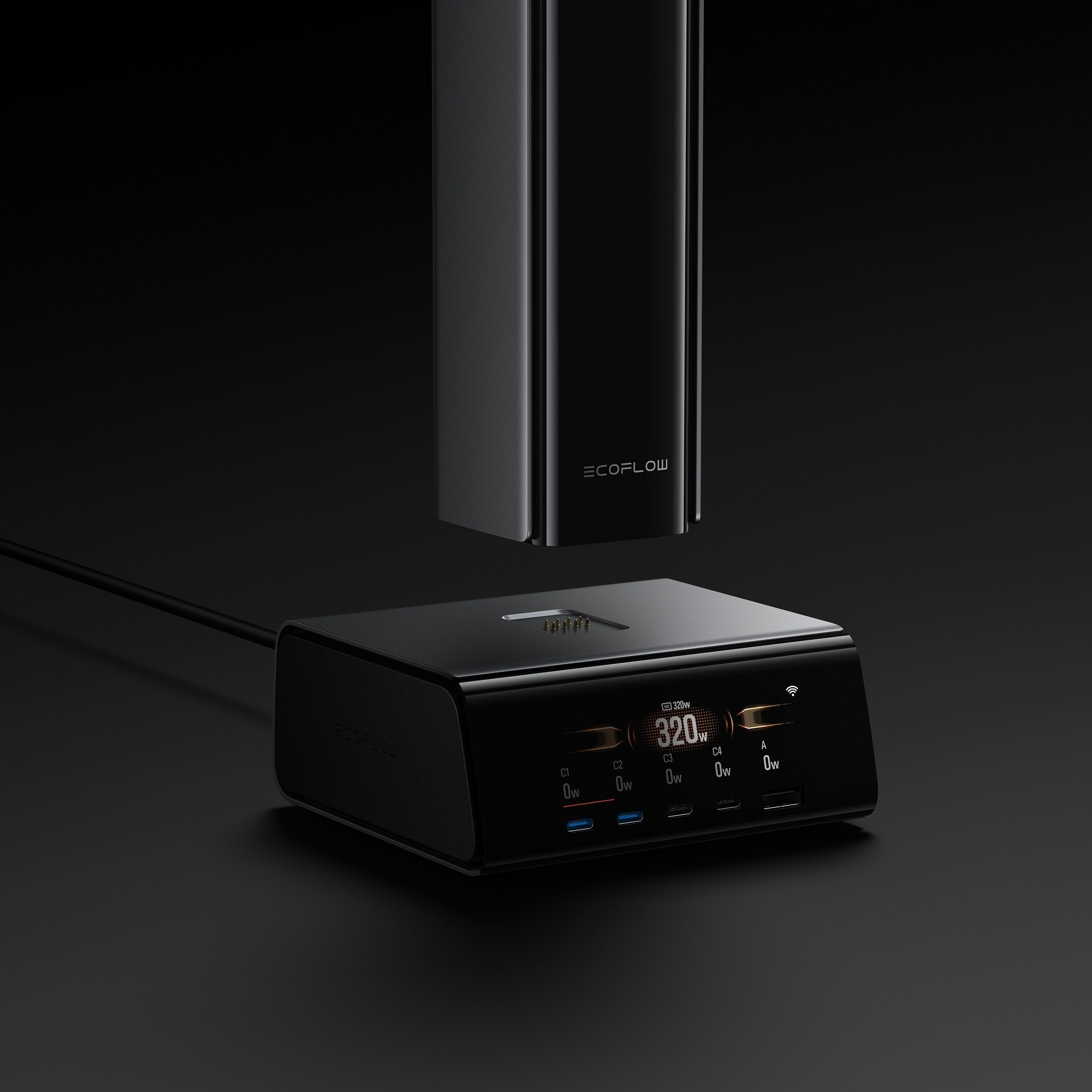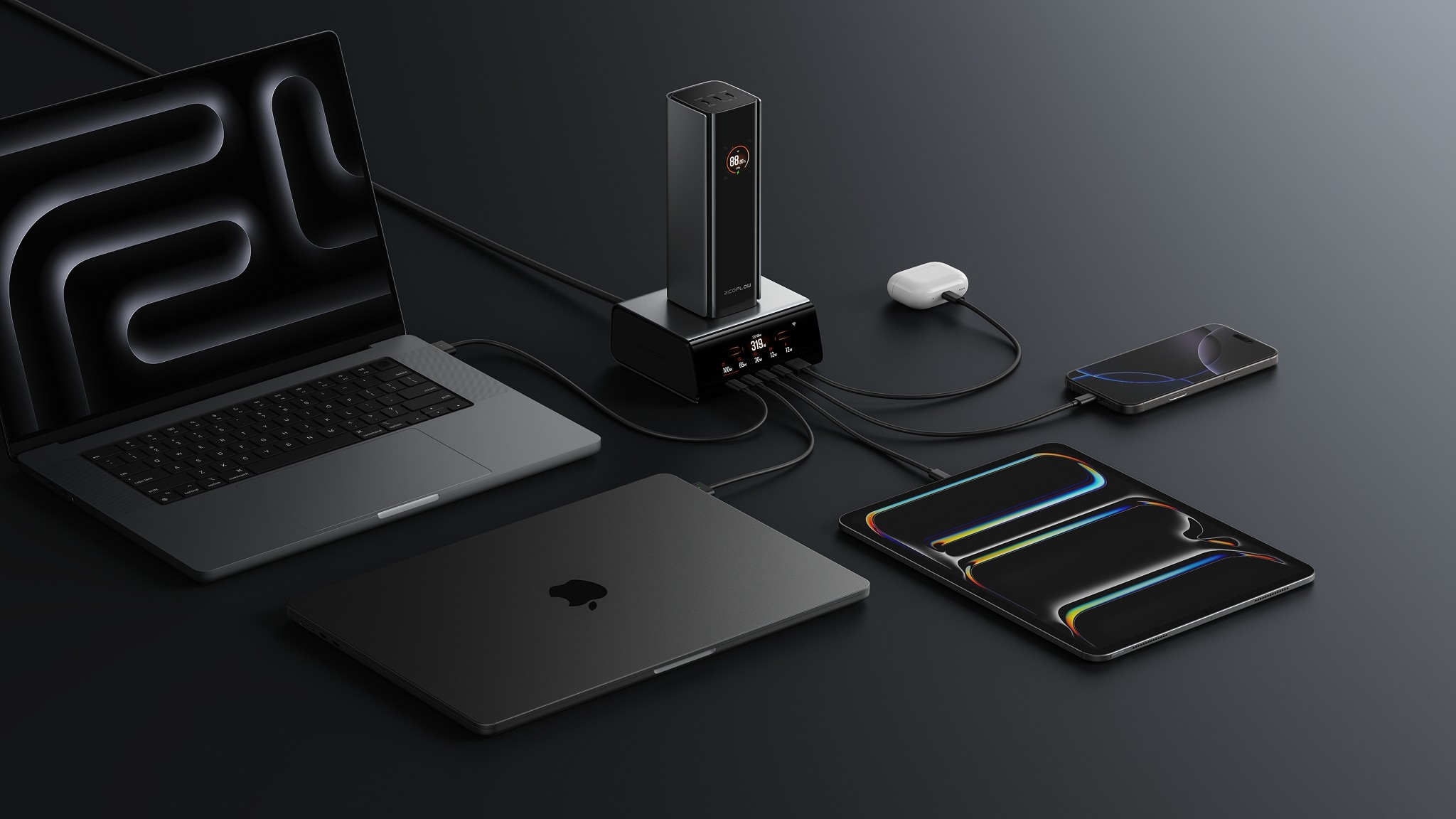Your Complete Guide to Charging Stations Near Me
Picture this: You're at the airport, phone flashing red at 3%, and your boarding pass is digital. Suddenly, every wall outlet becomes prime real estate. Welcome to modern life, where finding a charging station feels like winning the lottery. But what if I told you charging anxiety is completely avoidable? From hidden free spots to sketchy USB traps you should dodge, here's everything you need to keep your phone alive without the stress.
Where Can I Charge My Phone for Free?
On the bright side, free charging stations are all around you in almost all parts of America. From shopping malls to transportation stations, various businesses provide customers and visitors with free charging stations. Here’s where to look without opening your wallet.
Public Libraries and Community Centers
Your local library is no longer just for book-lovers. Most public libraries within the US are now offering complimentary charging stations, either through outlets or charging docks. Community or city centers, particularly those within large cities like New York, Chicago, and Los Angeles, also provide this service. Just bring your charging cable and inquire with the personnel for the optimal spot.
Coffee Shops and Restaurants with Phone Charging Stations
Here's where you'll find the easiest phone charger near me options:
National chains with reliable outlets:
Starbucks provides over 30,000 U.S. locations, most with accessible wall outlets
McDonald's offers free Wi-Fi and charging at counter seats
Panera Bread features outlets throughout seating areas
Dunkin' includes wall plugs available in most stores
Charging etiquette: Buy something small, don't hog outlets during rush hours, and keep an eye on your device.
Shopping Malls and Retail Stores
Major U.S. retail locations commonly feature public charging points:
Apple Store locations have charging cables in Genius Bar areas
Best Buy customer service desks may assist with charging
Target & Walmart provide seating areas near electronics or cafés
Simon Malls feature charging lounges in many locations
Airports and Public Transportation Hubs
Going on a trip? Airports are goldmines for phone charging outlets. Largest airports, including LAX, JFK, and O'Hare airports, now provide exclusive charging stations at various locations in terminals and outlets at most gates. Smaller airports have limited facilities, but they still provide wall outlets around the waiting areas.
Paid Phone Charging Station Options
Sometimes free options are occupied or unavailable. That's where commercial charging services come in. These paid solutions offer guaranteed access and faster charging speeds, though they come with fees ranging from $2 to $5 per session.
ChargeItSpot and Commercial Phone Recharge Stations
ChargeItSpot is a secure charging locker system that appears in malls like Simon Property Group locations nationwide. Here's how it works:
Find a Kiosk, usually near food courts
Place your phone in a locker
Enter your phone number for unlock code
Retrieve when charged (first hour often free, then $2 to $5 per hour)
Other commercial options:
Brightbox stations are common in convention centers
FuelRod kiosks are available at theme parks and airports ($3 to $5 rental)
Phone Charger Rental Kiosks
These work like bike-share programs. Popular services include:
Charge allows you to rent a portable battery and return at any kiosk ($2 to $4)
GoCharge kiosks are found in bars, restaurants, and hotels
Safety Risks of Public Charging Points: What You Need to Know
Before plugging into public USB ports, you need to understand the security risks involved. While most charging stations are safe, cybercriminals can exploit vulnerable public charging infrastructure to steal your personal data or install malicious software on your device.
Juice Jacking and Data Security Concerns
Before plugging into any public USB port, understand Juice Jacking, which is a cyberattack where hackers install malware or steal data through compromised charging stations.
Red flags to avoid:
USB ports with unusual attachments
Stations in poorly monitored areas
Cables permanently attached to charging stations


How to Safely Use Phone Charging Stations
Follow these rules when using where can I charge my phone locations:
Safety checklist:
Use your own charging cable and wall adapter
Plug into AC outlets (wall plugs), NOT USB ports
Use a USB data blocker ($10 at Best Buy), which is a small device that allows power but blocks data transfer
Keep your phone locked while charging
Avoid accessing banking apps or entering passwords
Wall outlets are safer than USB ports. Always choose them when possible.
When Public Charging Stations Near Me Aren't Available: The Portable Solution
When it comes to relying on public infrastructure, various uncertainties are involved. The stations may be faulty, occupied, or simply absent in certain locations. This is why smart phone holders invest in portable charging banks to control their charging requirements.


Why Carrying a Power Bank Is the Best Backup Plan
Searching "charging station near me" during an emergency is stressful. A power bank, which is a portable battery charger, eliminates this hunt entirely. Public charging stations force you to stay in one spot, tethered to a wall with your phone vulnerable in public view. If the station is occupied or broken, you're stuck waiting or walking to the next location.
A power bank changes everything. Charge while walking to your meeting, during your commute, or at an all-day festival. No more anxiously monitoring battery percentages or hunting for outlets.
Benefits beyond convenience:
Recharge on any occasion, whether hiking, concerts, or road trip
Lack of Data Security Issues associated with Compromised Public USB Ports
More cost-effective compared to rental rates
Several full charges in one day without having to plan around outlets
Ability to move around while charging your cell phone in your pocket or bag
What to Look for When Choosing a Power Bank
Not all portable chargers work the same way. Here's what you need to know before buying one:
Charging speed and battery size are most important. Get one with fast-charging that works with newer phones. Good power banks can charge your phone halfway in just 15-20 minutes. Cheap ones take hours. Pick the right size based on how much you use your phone—bigger batteries are heavier, so find the right balance.
Size and weight matter for everyday use. If your power bank is too big and heavy, you'll leave it at home. The best ones are thin and light enough to fit in your pocket or bag easily. You won't use it if it's annoying to carry around.
Built-in features make life easier. Some power banks come with charging cables already attached, so you never forget your cord. Magnetic ones stick to your phone without wires getting in the way. Others can charge multiple devices at once, which is great for trips. These extras turn a power bank from "emergency backup" into something you use every day.
Safety features shield your smartphone. The best portable batteries monitor their temperature, stop charging, and are made of non-fire materials. Some portable batteries may overheat and damage your smartphone’s batteries. In this case, purchase from reputable companies, which provide details on their safety features.
The EcoFlow RAPID Mag Power Bank (Built-in USB-C Cable) is a great example that does everything right. It has fast wireless charging that works with iPhones and most Android phones, stays thin enough to actually fit in your pocket, comes with a USB-C cable built in so you never forget it, sticks magnetically to your phone, and has cooling technology to prevent overheating.
Keeping Your Power Bank Ready to Use Make these simple habits part of your routine:
Charge it overnight one or two times per week (depending on how much you use it)
Keep it in your bag or car so you always have it
When you find a public charging station, charge your power bank instead of plugging in your phone directly (this protects you from data theft)
Store it somewhere cool and dry, since heat damages the battery over time
Conclusion
Public charging stations are always available, but they're never there when you need them. Free stations are always busy. Paid stations suck your wallet dry. Using someone else’s USB port jeopardizes your data security. The best answer is to buy an excellent portable charger with fast charging capabilities, compact size, and cables, along with appropriate safety measures. Buy one this week, and you will never Google “phone charger near me” at the 5% level of battery life again!
FAQs
Q1. Are Free Charging Stations Safe For My Phone Battery?
Yes, free wall outlets won't harm your phone battery, but avoid unknown USB cables or ports. Always use your original charger or certified cables from reputable brands. Public AC outlets are as safe as home outlets. The main danger comes from compromised USB ports that can damage your charging circuit or enable juice jacking attacks. Stick to wall outlets and bring your own equipment for safe charging.
Q2. How Long Does It Take To Charge At A Public Charging Point?
The rate of charging will depend on your cellular phone and the wattage port on the charging spot. Our local outlets are known to be regular charging stations, and this takes several hours to fully recharge. Fast-charging stations, which are now common at airports and malls, are efficient and faster. If your cellular phone is old or less costly, charging is slower compared to high-quality cellular phones.
Q3. Can Hotels Legally Refuse Charging Access To Non-Guests?
Sure, they may decline non-guest use of the lobby, as it’s private property. But large chains, like Marriott, Hilton, and Hyatt, may allow non-guest usage as an added convenience. It’s always best to ask the hotel desk staff, though, versus assuming they’re allowed to enter. Luxury properties will often point visitors to business lounges, and smaller properties are less likely to allow non-guest visitors during peak periods.
Q4. Do Power Banks Lose Charge When Not In Use?
Yes, indeed, portable batteries self-discharge. When not in use, portable batteries slowly discharge. However, high-quality portable batteries with advanced battery management systems will show less reduction in their charges compared to low-quality ones. It is, therefore, essential to charge portable batteries periodically, even if they are idle. Keep portable batteries in cold and dry environments, away from the sun, as exposure to sunlight reduces their lifespan.